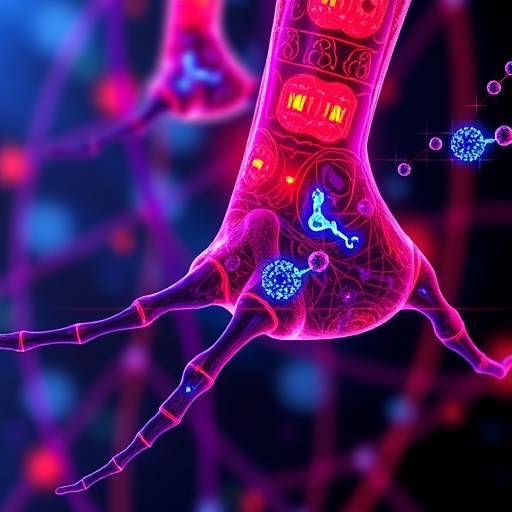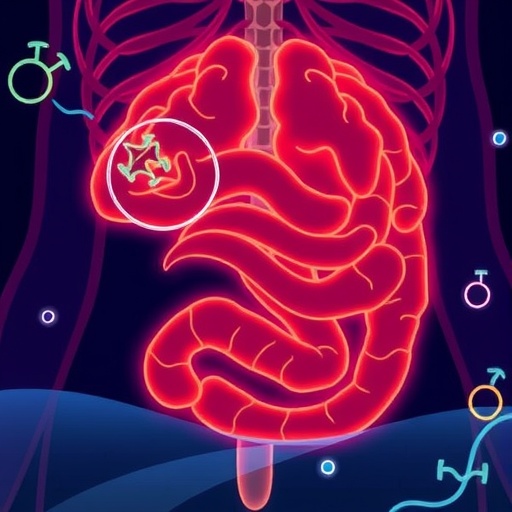Osteoporosis, characterized by progressive bone loss and increased fracture risk, remains a critical public health challenge worldwide. Central to this process are osteoclasts—specialized bone-resorbing cells whose activity determines skeletal integrity. Recent advancements have shed light on a sophisticated intracellular cooperation among lysosomes, mitochondria, and iron metabolism within osteoclasts, unveiling a functional axis that fundamentally governs their bone-resorbing capacity. This emerging “lysosome–iron–mitochondria axis” enhances our understanding of osteoclast biology and opens new therapeutic horizons for bone diseases such as osteoporosis.
At the heart of osteoclast function is the dual role played by lysosomes and mitochondria. Lysosomes have long been recognized for their degradative capabilities, containing an array of hydrolases that dismantle the mineralized and organic components of bone matrix. Their acidic internal milieu is vital for activating these enzymes, enabling efficient resorption. Concurrently, mitochondria provide the high levels of ATP necessary to sustain the energy-intensive processes required for bone degradation and cellular motility. Without the intensive metabolic support mitochondria afford, osteoclasts would fail to execute their resorptive functions effectively.
Iron emerges as a pivotal factor linking these two organelles, entwining their functions in an intricate regulatory network. Lysosomes facilitate iron mobilization by remodeling iron-containing molecules internalized via endocytosis or autophagy, particularly converting ferric (Fe³⁺) to ferrous (Fe²⁺) iron within their acidic lumen. This ferrous iron is then made available for mitochondrial uptake, where it plays essential roles not only in bioenergetics but also in the generation of reactive oxygen species (ROS). ROS, though potentially harmful, act as signaling molecules that can stimulate osteoclast differentiation and activation, thereby amplifying bone resorption.
Delving deeper into mitochondrial function, iron is integral to the synthesis of iron-sulfur clusters and heme groups—critical cofactors for complexes of the electron transport chain. These complexes catalyze oxidative phosphorylation, the principal pathway for ATP production in osteoclasts. Deficiencies in iron metabolism can thus blunt mitochondrial efficiency, reducing ATP availability and impairing osteoclast activity. This metabolic vulnerability highlights the necessity of tightly regulated iron trafficking between lysosomes and mitochondria, a process that has been largely underexplored until recent investigations.
Regulatory signaling pathways intersect with this lysosome–iron–mitochondria axis to fine-tune osteoclast function. Calcium signaling mediates intracellular crosstalk governing lysosomal exocytosis and mitochondrial dynamics. The mechanistic target of rapamycin complex 1 (mTORC1) senses nutrient and energy status, orchestrating autophagic flux that influences lysosomal integrity and iron release. Hypoxia-inducible factors (HIF) respond to oxygen fluctuations, modulating genes involved in iron metabolism and mitochondrial adaptation. Meanwhile, AMP-activated protein kinase (AMPK) acts as a cellular energy sensor, promoting mitochondrial biogenesis and lysosomal activity in response to metabolic stress. These intertwined pathways reinforce the notion that iron metabolism and organelle function are interconnected at multiple regulatory levels.
Emerging evidence suggests that the disruption of the lysosome–iron–mitochondria axis contributes significantly to the pathology of osteoporosis. Excessive osteoclast activity, frequently observed in osteoporotic bone, correlates with heightened lysosomal acidification, increased iron mobilization, and augmented mitochondrial ROS production. These alterations enhance osteoclast bone resorption, exacerbating bone fragility. Conversely, conditions such as osteopetrosis, characterized by impaired osteoclast function, may reflect defects in any component of this metabolic axis, underscoring its centrality in maintaining bone homeostasis.
From a therapeutic perspective, targeting the lysosome–iron–mitochondria axis offers a promising route for disease intervention. Pharmacological agents that modulate lysosomal pH or inhibit lysosomal ferric-to-ferrous iron conversion could dampen excessive osteoclast-mediated bone resorption. Similarly, compounds that disrupt mitochondrial iron uptake or blunt ROS generation may normalize osteoclast activity. On the flip side, enhancing this axis might be advantageous in scenarios of diminished bone resorption, supporting balanced bone remodeling and regeneration. Thus, the axis presents a versatile and precision medicine-oriented framework for future drug development.
Importantly, the dynamic communication between lysosomes and mitochondria extends beyond mere iron transfer. Physical organelle contact sites have been identified as hubs for metabolic exchange and signaling. Such contact facilitates rapid iron handoff and coordinates responses to cellular energy demands and stress conditions. Dysregulation of these membrane contact sites could perturb iron homeostasis and mitochondrial function, further implicating them in osteoclast-related bone diseases. Elucidating these microdomains at the molecular level remains a cutting-edge research frontier.
The broader implications of this axis extend into fundamental cell biology and metabolic regulation. Iron is a double-edged sword in cellular physiology—it is indispensable for metabolic functions but can catalyze oxidative damage if improperly handled. Osteoclasts exemplify how cells harness iron’s beneficial properties while mitigating its risks through organelle interplay and signaling networks. This insight enriches our appreciation of cellular metallobiology and may inform the study of other diseases involving iron dysregulation, such as neurodegeneration and anemia.
Future investigations will likely explore how systemic iron metabolism interfaces with osteoclast intracellular iron trafficking. Nutritional iron status, iron transport proteins in circulation, and iron regulatory hormones may influence osteoclast function via the lysosome–iron–mitochondria axis. Integrative approaches combining molecular biology, imaging, and metabolomics are essential to map this complex landscape. Moreover, patient-derived cellular models and in vivo studies will be critical to validating therapeutic strategies centered on axis modulation.
In conclusion, the lysosome–iron–mitochondria axis redefines our understanding of osteoclast biomechanics and metabolism, positioning iron as a central conductor of cellular energetics and degradative function. Harnessing this knowledge holds immense potential for addressing osteoporosis and allied bone disorders by enabling targeted interventions that restore or recalibrate osteoclast activity. As this paradigm garners attention in the research community, it promises to drive a new era of organelle-centric therapeutics with broad biomedical impact.
Subject of Research: Not applicable
Article Title: Lysosome–Iron–Mitochondria Axis in Osteoclasts: Iron as a Central Player
News Publication Date: 14-Aug-2025
Web References: DOI 10.34133/research.0840
References: Not detailed in the text
Image Credits: Copyright © 2025 Shengnan Qin et al.
Tags: advanced research in bone biologybone health and metabolismintracellular cooperation in osteoclastsiron metabolism in bone cellslysosome-iron-mitochondria axismechanisms of bone resorptionmitochondria and osteoclast energy metabolismosteoclast biology and functionosteoporosis treatment strategiespublic health challenges in bone diseasesrole of lysosomes in bone healththerapeutic approaches for osteoporosis





